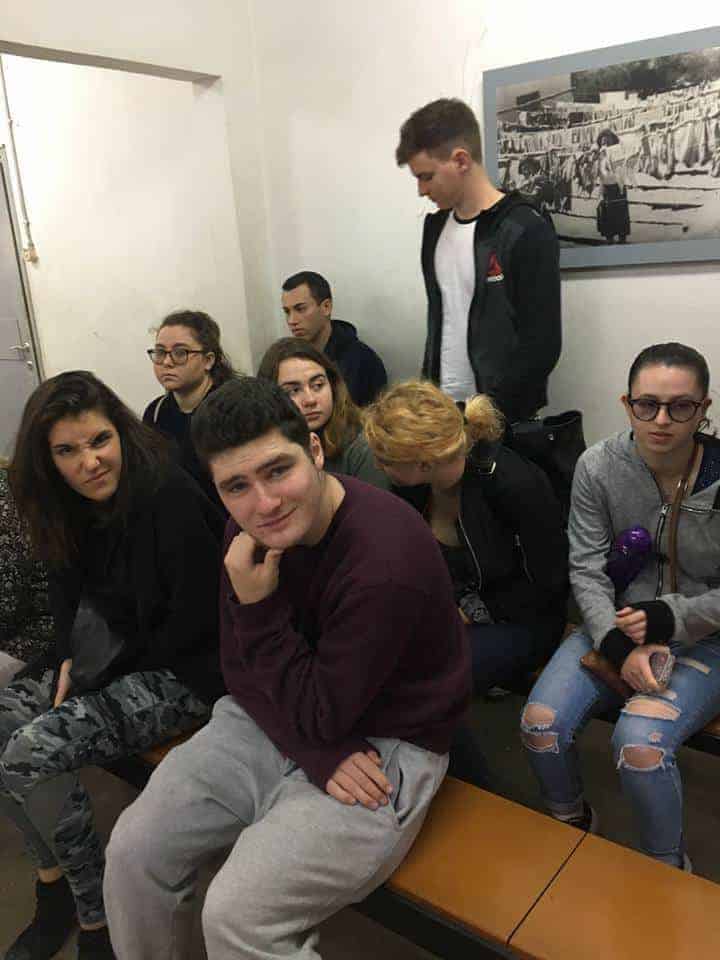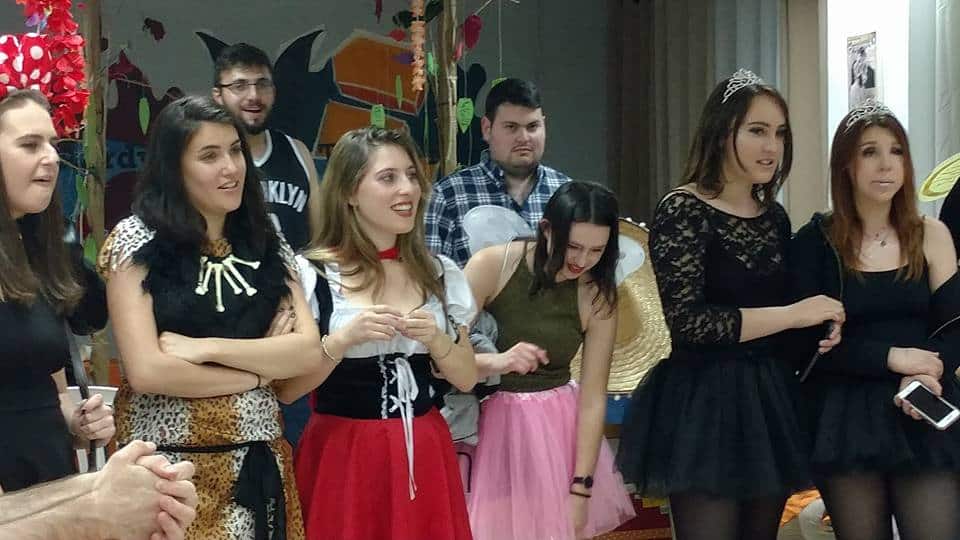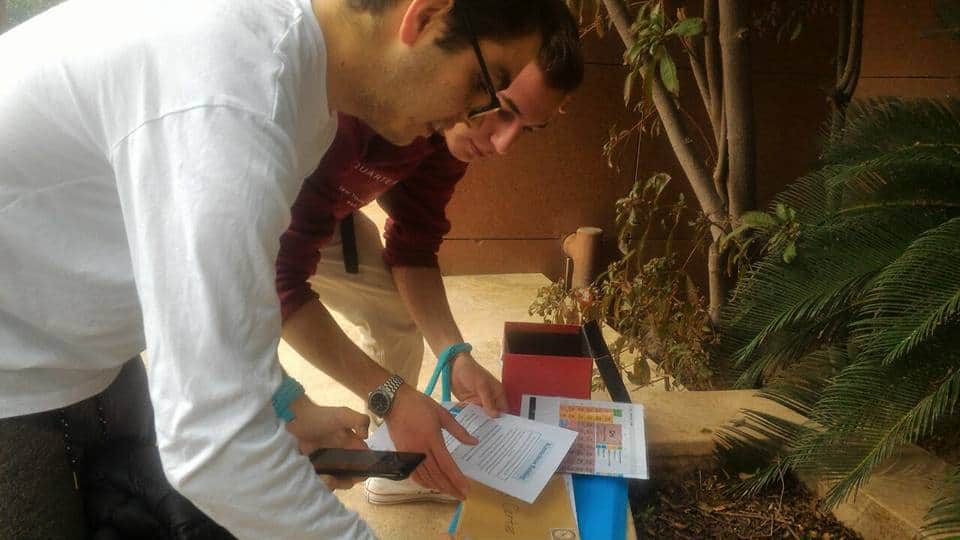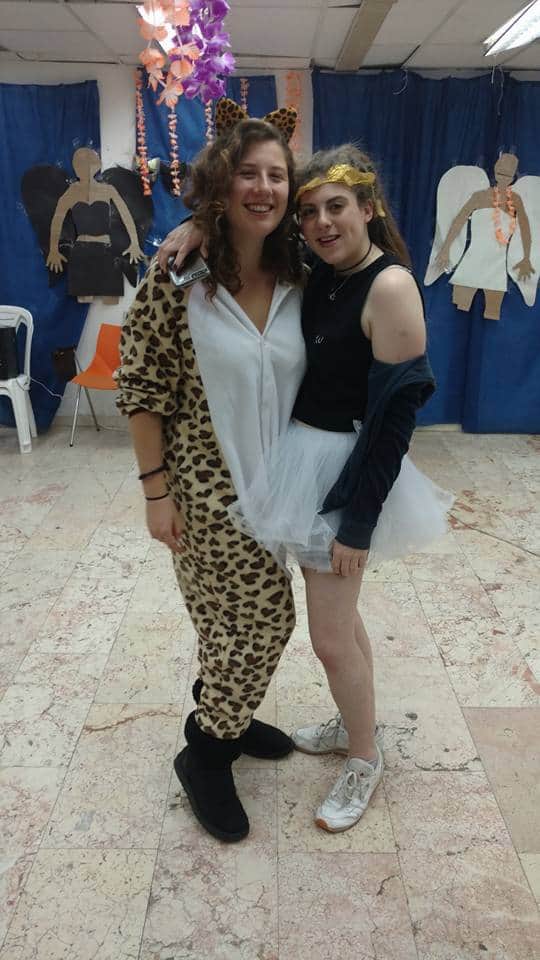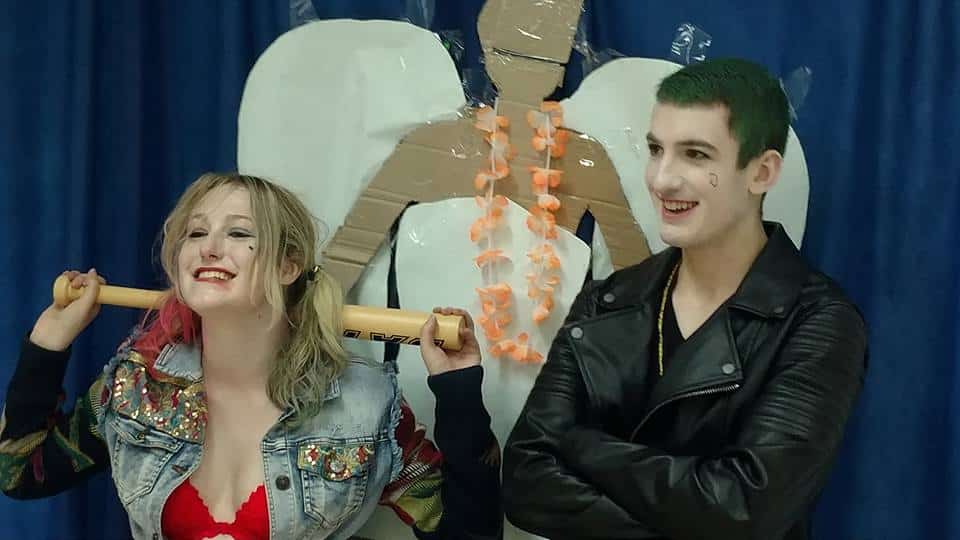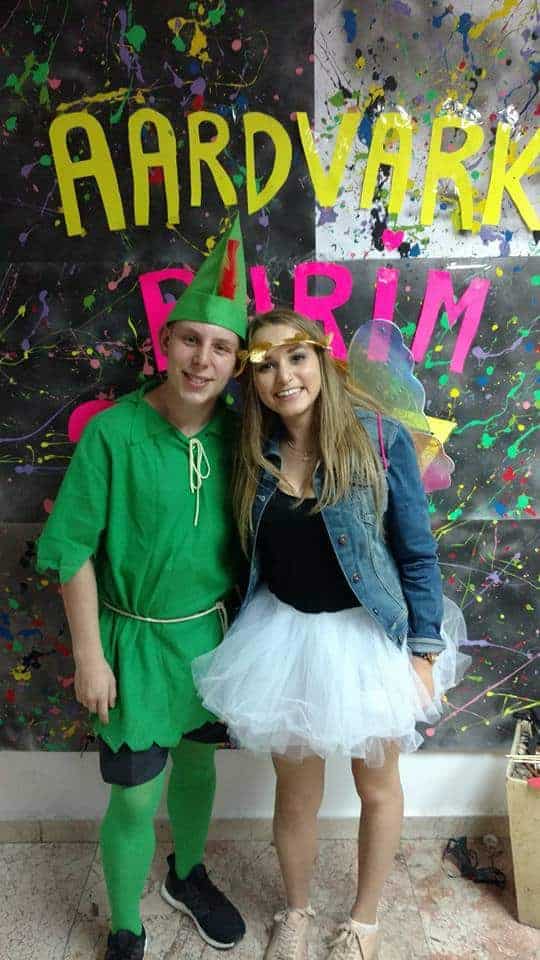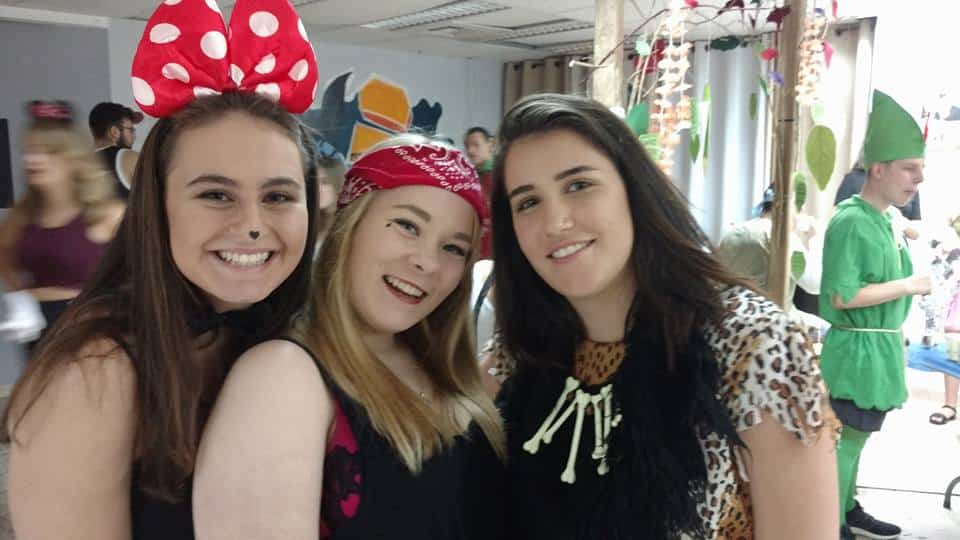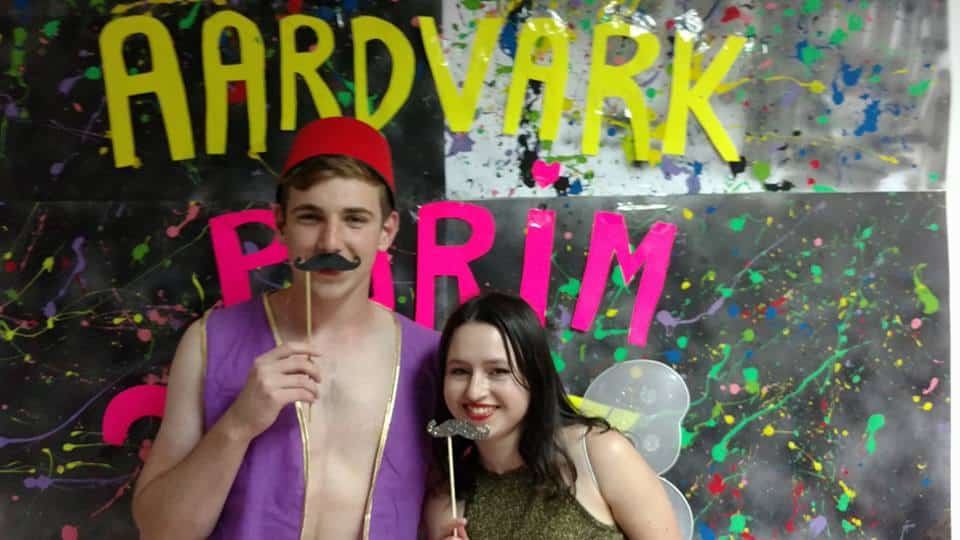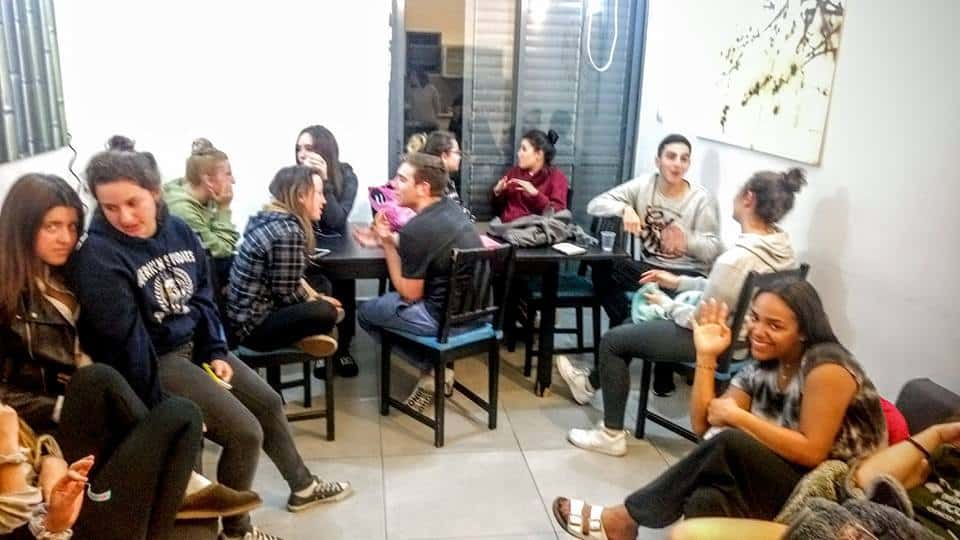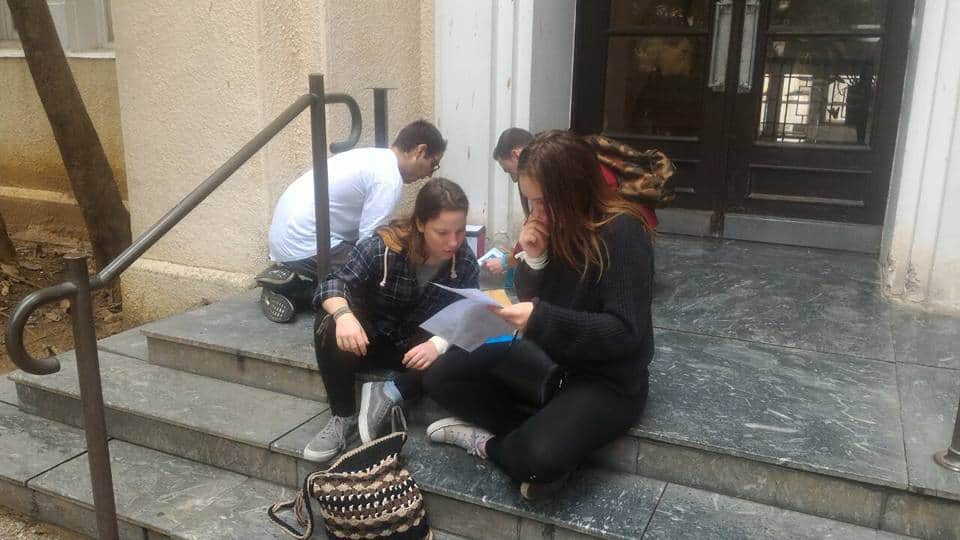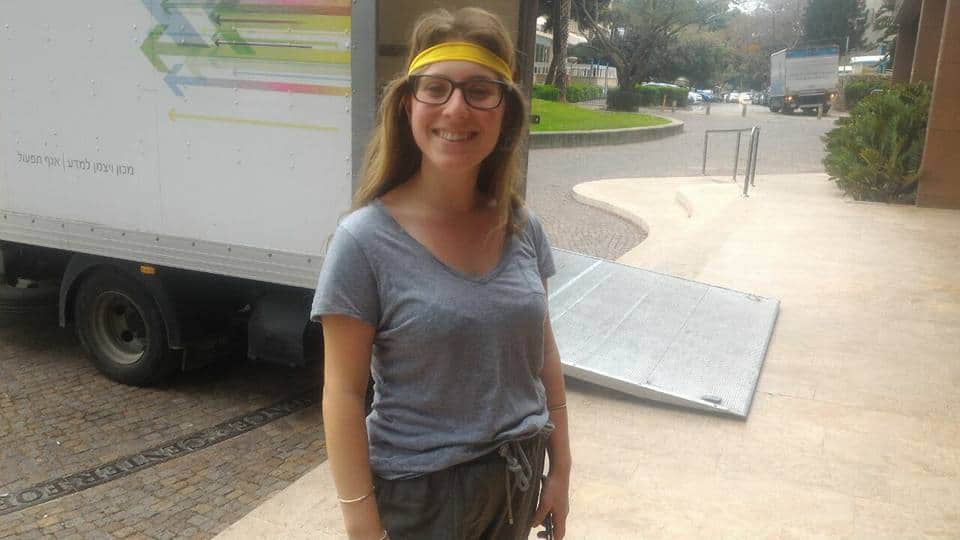Shalom Parents,
Last weekend was a very special one. Leading up to and throughout Purim Israel comes to life and is full of people celebrating the most colorful holiday of the year. Customs from all over the world come together to bring Purim to life. Music is everywhere and everyone has fun together! It doesn’t matter who you are, where you came from or how much money you have, everyone is out on the streets dancing and celebrating together.
A group of students (Noa Sperber, Eliane Cantor, Liora Katzew and Limor Katz) organized a Purim costume party. They decorated the office in so many colors! It looked amazing (Check out the pictures).
Then, on Saturday evening, we launched our annual costume competition. Many students claimed to have the best costume and idea, but only one custom won – Nash & Tess Bernstein. I’m not sure what they were dressing up as but if you have seen the relevant movie then you will immediately recognize it.
On Monday morning, the students went to fulfill one of the most important mitzvahs of the holiday. They met with staff in a nursing home to help make the elderly’s day more enjoyable by making them laugh and playing games with them. It took a bit of time before they felt comfortable enough to approach the residents but after talking for a little while and getting to know one another there was no way to stop them! Students were singing Israeli Purim songs, while others were sitting and listening to fascinating stories from the past. One of our own, Sam Kotek, grabbed a microphone and did some beatboxing to a well-known Purim song while everyone else was singing and laughing. It was a happy morning for both the residents of the nursing home and the students (the nursing staff were also pretty excited with your children).
Later on that day, the madrichim met with the students for the weekly apartment meeting. After making sure that the apartments were clean, they moved on to another activity from the program, “My Israeli Journey”. This time, the activity focused on setting new goals from a place of knowledge. The madrichim visualized the final scene of the last day of Aardvark.
“You will be sitting in a fancy hall, dressed up nicely and will be hearing a lot about what we’ve done. Then you will be asked, ‘How was your gap year?’”
This is an activity that is supposed to remind them of why are they here and to make that sure they are doing their best on Break Out March!
Tuesday was one of my personal favorite tours with Aardvark, the Ayalon Institute located in Rechovot. The students were led through an underground narrow opening in the floor of the Kibbutz’s laundry room. As the students went down the stairs they found themselves in an old bullet factory. The members of the Kibbutz used to use the noise coming from the gigantic washing machines above to cover up the noise coming from the factory. The workers spent their days in a small, suffocating room making bullets for the fighting brigades to use when the time came. The bullet factory was kept secret not only from the British but also from the kibbutz’s residents. The members of the kibbutz believed that the people that manufactured the bullets were actually working in the fields. In order to maintain this illusion the underground workers had to sit in an improvised tanning room in the basement for a few hours each week so that no one in the Kibbutz would wonder why the hardworking agriculturists were all so pale. It is a very interesting place with a great story and I’m happy the group got to see it.
This week in Parsha and Pizza the group studied the Torah portion of Ki Tissa. It contains one of the most dramatic moments of the Bible when the Jewish people, waiting for Moses to come down from Mount Sinai, conspire to build a Golden Calf and begin to worship it causing both God and Moses to anger. The episode leads to the death of thousands of idolaters and a rupture in the relationship between God and the Jewish people. Rabbi Marc helped the group understand the possible reasons that led to idolatry and why the people ended up worshipping a calf as opposed to any other image. One lesson that can be learned is that of hubris. How surprising is it to think that the very people who saw God’s miracles, plagues and wonders and who stood at Sinai and heard God speak could fall from such great heights to such a historic low. The higher they rise the harder they fall. Maybe the Jews felt that they had made it to the top. From their pinnacle of spirituality what could harm them? The Netivot Shalom commentary points out that it is often exactly when things are going well that the Yetzer Hara (evil inclination) hits us. This is the time when we need to be most grateful and alert and not the moment to bask in our own glory. This is a great chance to thank your children for making our weekly learning so special. Those that come each week do so voluntarily and choose to dedicate time to enrich themselves and connect to their tradition. Rabbi Marc hopes that you enjoy reading these weekly summaries and that you find a chance to talk to your children about them every so often.
This week on Selah there was no lunch and learn because of Purim. The students had the best Purim experience of their lives. There really is nothing like celebrating the holidays in Israel. Now we get to look forward to Pesach. Let the cleaning begin!
On Tuesday Rabbi Eli continued to teach us from the Tanya. This week the group were trying to find a way to love people they don’t like and to like the people they don’t love. We spoke about accepting criticism and criticizing others and the famous Jewish idea that we can only see a flaw in someone else if we too have that flaw.
On Thursday we ran a seminar focused on Tikun Olam. Rabbi Marc opened with a textual study on social justice and speakers from three different organizations then joined us: Olam, NATAN and Project TEN. See the links for more information about them. The group were able to meet some inspirational people and discover work done by Israelis and Jews worldwide to make a difference. As some Aardvark participants are currently in Nepal, this was an appropriate week to think about how the rest of can make a difference.
On the Service Learning program students are examining gender roles in the Jewish community beginning with a concept review of Judaism’s perspective. The discussion was driven by two factors: First, Orthodox male resistance to women’s participation in their religious institutions: no women publicly participating in Orthodox prayer services, no women making religious rulings, no women rabbis. Second, never in 2,000 years have so many women been so well educated about Jewish Law and commentaries and yet males enforce a rigid and regimented notion of separate but equal. Many women are challenging these positions and others are dropping out. Service Learning students are writing a 700-word response to an article dealing with gender issues in the Jewish community. It can be in support of the author’s position or take exception as if this were a debate per our discussion in class. They can work as a team, or submit individually written papers and will then have to defend their position in class.
That will be all for now,
And until next time,
Shabbat Shalom,
Adi.




